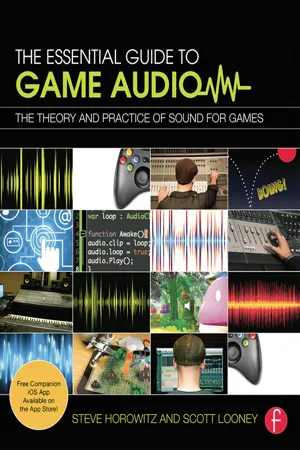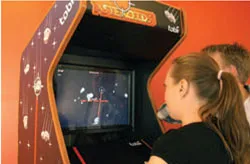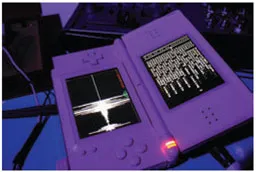
eBook - ePub
The Essential Guide to Game Audio
The Theory and Practice of Sound for Games
This is a test
- 240 pages
- English
- ePUB (mobile friendly)
- Available on iOS & Android
eBook - ePub
The Essential Guide to Game Audio
The Theory and Practice of Sound for Games
Book details
Book preview
Table of contents
Citations
About This Book
The Essential Guide to Game Audio: The Theory and Practice of Sound for Games is a first of its kind textbook and must-have reference guide for everything you ever wanted to know about sound for games. This book provides a basic overview of game audio, how it has developed over time, and how you can make a career in this industry. Each chapter gives you the background and context you will need to understand the unique workflow associated with interactive media. The practical, easy to understand interactive examples provide hands-on experience applying the concepts in real world situations.
Frequently asked questions
At the moment all of our mobile-responsive ePub books are available to download via the app. Most of our PDFs are also available to download and we're working on making the final remaining ones downloadable now. Learn more here.
Both plans give you full access to the library and all of Perlego’s features. The only differences are the price and subscription period: With the annual plan you’ll save around 30% compared to 12 months on the monthly plan.
We are an online textbook subscription service, where you can get access to an entire online library for less than the price of a single book per month. With over 1 million books across 1000+ topics, we’ve got you covered! Learn more here.
Look out for the read-aloud symbol on your next book to see if you can listen to it. The read-aloud tool reads text aloud for you, highlighting the text as it is being read. You can pause it, speed it up and slow it down. Learn more here.
Yes, you can access The Essential Guide to Game Audio by Steve Horowitz, Scott R. Looney in PDF and/or ePUB format, as well as other popular books in Computer Science & Digital Media. We have over one million books available in our catalogue for you to explore.
Information
LEVEL 1 AAA (Animation, Art, Audio) Making Sense of Sound for Games
DOI: 10.4324/9781315886794-1
- What’s a Platform?
- A Video Game’s Structure
- Is it a Story or is it Interactivity?
- “Make It So”—The Game Controller
- Let’s Make Some Noise

Learning Outcomes
- Understand what makes audio for games unique
- Develop a basic overview of hardware and software for games
- Gain insight into emergent behavior
What’s a Platform?
The physical electronic systems used to play video games are known as platforms. The term describes the electronic or computer hardware that runs the software that allows a video game to operate. A platform may be anything from a large mainframe computer to a small handheld device. The platform may also be called a system.
Video games are played on several different types of platforms:

A Video Game’s Structure
As audio people, It is important to understand why games are the way they are. We need to keep the picture in mind as to what exactly is going on under the hood in a video game. So let’s break it down into some basic observations.
Video games are by nature interactive. This means that when you provide some kind of input into the game, you get a response of some kind.
A really basic non-game analogy is simply typing something on a device. When you press physical keys on your device’s keyboard (or on the glass of your tablet or smartphone), the character corresponding to the character you typed appears immediately on the screen.
A slightly more complex analogy of interactivity would be visiting a link to a website. When the user clicks a link on a web page, the action sends a command to a server to load the web page or the object associated with that link.

A video game works in a similar manner; it uses the interaction between the player and an electronic or computerized device to generate feedback that is displayed on the video screen. Initially, games consisted of simple interactions, but as these interactions have gained complexity, they have produced increasingly rich entertainment experiences.
Arcade
An arcade game is a self-contained electronic device that typically plays only one game, which is housed in a freestanding cabinet. The arcade games were the first commercially successful platform, and enjoyed huge popularity in the 1980s. Although their popularity has since greatly diminished, they are still being made today.

Console
A console game is played on an electronic device called a console. This device usually connects to a television set or other monitor for its video output. The console was the first major gaming platform that emerged separately from the arcade. You may also hear the term next-gen console, which refers to newer video game platforms, that may or may not actually be consoles, but are called as such because the term itself evokes such a powerful connotation with dedicated gamers.

PC
A PC game is any game played on a personal computer. This platform has seen a lot of shifts over the years, the PC game market is still dominated by Windows, although the changeover to Intel processors by Apple has now made it possible to port games much more easily to Mac. In addition, Linux has emerged in recent years as a viable game platform. The Linux OS is similar in many ways to Apple’s Mac OS X, and the online game vendor Valve (makers of Team Fortress 2 and Portal, amongst others) has announced full support for it in its Steam online game distribution service. Will this lead to a three way tie between Windows, Mac and Linux? Probably not, but you never know …

Handheld
A handheld game is played on a self-contained, portable electronic device that is designed specifically to be held in a player’s hands. Although there were other small, simple dedicated gaming handhelds created by toy makers like Mattel, it was the Nintendo GameBoy that was the first well-known device to establish a viable market for handheld devices. Since then, there have been many others, like the Play Station Portable and Nintendo DS, to name just a few.

Mobile
A mobile game is played on any device that is portable and self contained, like a handheld, but unlike handhelds the device is not created primarily for gaming purposes. This platform had its beginnings in simple cell phone games like Snake, but has greatly expanded with the advent of smartphones and especially tablets using iOS, Android, and Windows Mobile. The mobile platform is expanding at a huge rate at the moment. Games for these devices may be categorized as PC games, but this is really a misnomer, since the operating systems for PC and mobile devices are different.

Multiplatform Games
Recently, gaming has started to move away from running on only one platform. Historically a Mac version of a Windows game (a fairly uncommon occurrence) would be the most common example of a multiplatform game. This is normally referred to as a port. Since Mac and PC platforms now share a lot of hardware similarities (using Intel processors for instance) it becomes easier and easier to create Mac and PC versions of top-selling games.
Web-Based Games
One of the very first examples of going multiplatform is using an engine that has the same visual interface on every machine. Tools like Adobe’s Flash were used frequently to make interactive media and games, and because the finished work could run on Mac or PC identically, the experience for gamers was the same. The tradition of web-based gaming is currently evolving away from using Flash and is more and more dependent on HTML5 and Javascript. Its ambition to provide the same gaming experience on PCs is further expanded with the addition of mobile devices like smartphones and tablets.
Cloud Gaming
This logical extension of multiplatform gaming is a very recent phenomenon in gaming. Although some games are made for multiple platforms, cloud games are quite literally the exact same game, but made available for a large variety of devices via a single online service. Players of these games can play them on any device the cloud service supports, and the service keeps track of the player’s progress so that they don’t have to start over again when they switch to a new device—the service simply resizes the game screen and resources for the appropriate hardware platform.

Is it a Story or is it Interactivity?
Let’s take a few moments to discuss the basic theories of video games. Even though computer scientists have studied video games from a technical position for a while now, the coverage and analysis of video games as an artistic medium is relatively new. There are two primary ways in which video games are analyzed these days.
Video Games as Stories
One group of people regard a game as something related to a book, a play or other media based on a story. Those interested in tying the concept of gaming as an extension to storytelling are called narrativists. They tend to regard video games as complex “cyberdramas” through which players can become other people and participate in other worlds. Of course, many games may have multiple conclusions and results due to the aspect of choice in the game. For narrativists this puts a video game into the category of interactive fiction.
Video Games as an Interactive Experience
The other group of people regard games primarily from the basis of the interactive structure within the game itself. Every game comes with its own set of rules and restrictions as to how the game should be played. These people are known as ludologists, and they look mainly at how the structure of the game places demands and restrictions on the player, and how the player then navigates their way through the restrictions in the game. These restrictions can then affect the social and artistic qualities of the game as a result.
Video Games are Emergent
In spite of the fact that each of these groups have differing viewpoints on the basis of what games are, they do tend to agree that most games depend on emergent principles. The term refers to complex outcomes that can result from the interaction of simple rules.
A rather beautiful example of this is the forming of snowflakes. Snowflakes form when water from clouds freezes, and the method in which they freeze, the temperature, the wind direction, each of these ar...
Table of contents
- Cover
- Half Title Page
- Title Page
- Copyright Page
- Table of Contents
- Acknowledgments
- Foreword
- How to Use This Book and The Application
- Note for Educators
- Introduction: Why You Need This Book
- Level 1: AAA (Animation, Art, Audio): Making Sense of Sound for Games
- Level 2: On the Road—to NOW! A Brief History of Games and Game Audio
- Level 3: My Non-Linear Life: Audio for Interactive Environments
- Level 4: What Is Hip? Styles and Genres: Welcome to Acronym Hell
- Level 5: Bleeps, Blops, Clicks, and Pops: Sound Design in Games
- Level 6: Compose Yourself! The Art of Composing for Games
- Level 7: Do you Hear That Voice in My Head? Voice-Over for Games
- Level 8: Meet the Middleman: Understanding Audio Middleware
- Level 9: The Early Bird Gets the Worm: Preparing Your Audio
- Level 10: ‘Silly Human…’: How Game Engines Think
- Level 11: Unify My World: Audio in Unity 3D
- Level 12: Unity Too: Basic Audio Implementation in Unity 3D
- Level 13: Back To The Future: The World of Mobile and Web Games
- Level 14: Show Me The Money: Getting a Job in Sound for Games
- Index